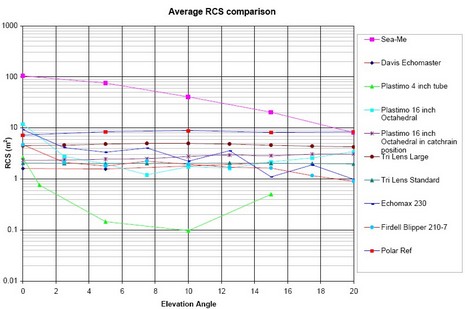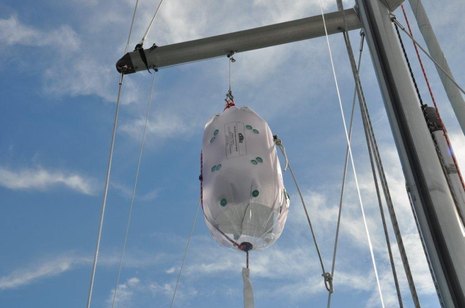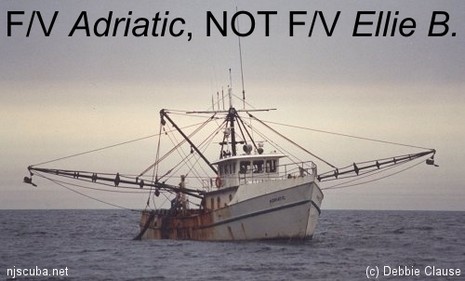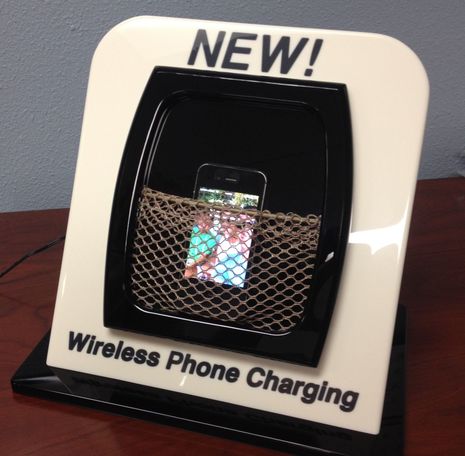Radar reflectors, do they really work?

Big thanks to John G. for a head’s up about the MAIB’s recent report called “Performance Investigation of Marine Radar Reflectors on the Market.” The full PDF is available on this page, along with a typically MAIB meticulous report on the tragic sinking that prompted it. Three sailors died after the big ferry Pride of Balboa apparently ran down the 26′ yacht Ouzo early one morning near the Isle of Wight. At any rate, the graph above plots the average Radar Cross Sections of most available reflectors. You won’t like those results once you understand them. The testers concluded that only the Sea-Me active reflector delivers a strong enough radar return to even meet the ISO 8729 standard, and some perform so poorly that they aren’t worth carrying because they’ll only give skippers a false sense of security! None of this real news; in fact I discussed similar findings here almost two years ago. But it’s a good idea to be reminded that even good passive radar reflectors have limited abilities. Plus I was surprised that the MAIB didn’t mention Class B AIS in their recommendations about collision avoidance. Did I miss something?














…and guess which reflector is fitted on my boat? Yes, the most useless one there, AND its been set at about 15 degrees to the vertical (by the previous owner) and so is USELESS!
Very, very scary reading indeed, I commend it to all sailors.
AIS was mentioned (but not Class B) but the report states that it wouldn’t have helped as the PoB didn’t have an integrated Radar & AIS display and the OOW was navigating primarily on radar.
If the Ouzo had an an AIS Rx, she may have had more warning of the impending arrival of the PoB, but would the crew have been watching it, or would the proximity alarm have been loud enough over the noise of the seas and wind? Who knows….
Yes, the emperor has no clothes! Great reading.
Mystery why the MAIB doesn’t mention AIS B; maybe timing, not quite prime time yet for AIS B? Hard to see why they wouldn’t find it a benefit.
I guess it doesn’t really matter that I forgot to mount the 2″ tube to my stay before stepping the mast! Might as well leave it at home as it turns out to be pretty much useless.
Hmmmm.
Thanks for sharing,
richard.
1. I just saw this a week ago, and had the opportunity to read the entire article, it’s scarry when you combine this with information from an Ocean Navigator article I quote at the end of this message … basically there is no “good” solution.
There is a Plastimo 4 inch tube on display at our local marine store that I was seriously considering picking up (not any more) to keep mounted permenantly. I have a Davis Echomaster (next best in graph above to sea-me) I keep in storage due to size, until needed in a fog, and thought it might be better to have something more permenantly mounted.
2. I had actually purchased a Sea-me a year ago, and after taking it out of the box and reading the instructions, I was discouraged about installing it myself. It was bulky, heavy (1/2 of which is in the weight of the cables), and consumed lots of power … not ideal for a sailboat … and would require over $1000 for a professional to install.
As I was pondering that and looked into other options, I came across an article in Ocean Navigator Magazine that pointed out that active units including Sea-Me aren’t ideal either, and had a special weakness as a tool in collision avoidance, and decided instead to pack up and return the Sea-me. In summary … at shore ranges, under a mile, a passive unit is better … and as we see in this article, the passive units are not so great either.
See the Ocean Navigator Article here:
http://www.oceannavigator.com/article.php?a=9952
I draw your attention to the text that starts with “Unique to active RTEs (active Radar Target Enhancers), limitations in the electronics produce an effect at short range that must be considered. As an active RTE approaches a radar, the incoming pulse gets more powerful and the retransmitted pulse increases proportionally, …
… skipping to the punch line “as an example, I estimate that the effective RCS of a nominally 34-square-meter active RTE (typical value for the Sea-Me) begins to decrease at seven miles from a 50-kW, big-ship radar and is reduced to about 3 square meters at about three and a half miles. In this case a common passive reflector might provide better detection in wave clutter at ranges of importance to collision avoidance than the more expensive active RTE.”
Ouch … so scratch the Sea-Me off the graph above, and your left with nothing that meets the ISO-8729 standard. Looks like the best plan is to be vigiliant at watch keeping on our own radar, enhanced with an AIS receiver.
… Althought, I get such incredibly clear radar returns on my 2kw Raymarine from discarded Mylar ballons sitting on the water, that I wonder if maybe I shouldn’t get a couple of those up in my mast. At the very least, I wouldn’t get a false sense of security.
If a ship’s officer thinks that 30 feet is an acceptable distance to pass a small boat, then it does not matter what electronic aids are put in front of him! It is up to us boaters to keep a safe distance, with the assumption that we are invisible to the big ships. AIS B does not change that.
Those are very busy waters, and I am sure the crew of the Ouzo would have been keeping a lookout. A ship like that is hard to miss on a clear night. But I can imagine what might have happened: the crew took some bearings and concluded that the ship would pass safely ahead of them. They did not notice the ship’s course change. Next time they looked the ship was closer, but they did not take another bearing, so they still thought she would pass ahead. At some point, when the ship was very close, they said “Sh*t! We better wake the skipper!”.
If they had an AIS receiver, they would have known about the ship’s course change, and they would have plenty of time to keep clear.
Interesting. In the lengthy report on the Ouzo the wrote:
1. Concluded that it was unlikely that deployment of the radar reflector (it was unknown if it was deployed, but Ouzo did carry a fold up Octahedral reflector just like the one on my 39 foot sailboat !) it was unlikely it would have made a difference to the RCS of the yacht. (page 28). In addition to the yacht having very little RCS, they mentioned the auto-clutter suppression feature of the ferrys radar (page 30)
2. Had Ouzo carried AIS it would have made no difference in the outcome, as it would not have been seen by this ferry. (page 30)
3. This was a huge ferry, 176 meters long!
4. Althought some small faults were found with the watchkeeping before the accident, realistically … it wasn’t too bad, in fact I would believe far better than average.
… although in retrospect it seems reckless of the ferry crew to assume the people in the sailboat didn’t need assistance, simply because the lights on their sailboat still appeared to be working.
Indeed, reading between the lines, I get the feeling that the reason the OOW is in court isn’t so much for the collision, but for failing to assist afterwards.
Echomax comments on the MAIB report (and my entry):
1 That the report failed to disclose any thing that was not already known or published
2 The See-Me is a good piece of kit but DOES NOT meet ISO 8729 as stated by Ben Ellison – it does not respond to S band radar. Furthermore the See-Me and other active antenna were specifically excluded from the draft new ISO 8729 not only on this but the Japanese provided evidence that the active antenna oscillate i.e. receive, enhance and re transmit a response which in turn can hit a buoy or and yacht reflector and think that the return the signal is another radar which in turn is returned. Imagine a busy boating area such as our Solent with a dozen or so active RTEs returning and firing out signals?
The See-Me is 100% power and component reliant. When our Ben Fogle was rowing the Atlantic he was nearly run down by a Russian trawler as his See-me had packed up. See-Me’s explanation for this was “Well it was a second hand one”!
QinetiQ are now trying to devise a specification that can be used in the UK for the active to meet. Rumour has it that it is being drafted by See-Me! The big problem here is that the ISO boffins have come up with revised ISO 8729 specification that no passive reflector, or active to date, of any acceptable size can meet.
3 The MAIB statement that a 4M2 reflector has a 50% chance of being picked up by a radar screen at 10NM do not appear to be shared by the respected and long standing published data of Wylie which are published on our website where a 10M2 reflector is diminished to just .01M2 at 10NM. A 4M2 reflector just .08M2 at 2NM in moderate precipitation. If a radar is fitted with ARPA it will ignore such a response. So why print such a statement?
The report conclusions made scant reference to precipitation and attenuation by sea state and prevailing weather. Does the average yachtsman realize that moderate precipitation attenuates the return signal by 70%?
4 Report fails to deal with mast shadow, between 22/33 degrees, not much point in having a 10 degree limit in the ISO8729 if by mast fixing you obliterate this.
5 Echomax have been fixing serial numbers to their reflectors since October 2003 when Ships Wheel Mark – SOLAS certification was obtained. The MAIB confirmed in answer to our question that the unit tested had no serial number making it more than four and half years old and not current production. They state the EM230 narrowly missed ISO 8729 but not that this was due to 206 degrees instead of 240 degrees response at 15 degrees of heel.
6 The report failed to make clear the Echomax preferred halyard suspension option which alleviates both mast shadow and compensates for up to 15 degrees of heel. Their answer being that we supply mast brackets. This is response to supplier/competitor demand. When this method is used the Echomax EM230 is as, if not more, responsive than a standard 5.25 inch lens type reflector
7 The Blipper 210-7 results bore no resemblance to any previous published tests we have seen or made ourselves, all of these being poor to bad. We are aware that Firdell paid QinetiQ alot of money to try to improve the standard of the Blipper 210-7 to try to meet ISO 8729, but obviously failed, so that they could sell the business. The MAIB did not answer where the test unit was manufactured, purchased or obtained, or whether it had a date or serial number or whether the results were from a golden sample. Their test results did confirm Echomax EM230 had over twice the peak of the Blipper 210-7 and 50% higher average RCS at zero degrees. Clearly the 210-7 test results bore no resemblance to the thousands of units in use around the world. Any existing Blipper owner reading the report will be misled into a sense of false security.
8 The MAIB conclusions that the large TriLens at 5.5KG at around 」3/400 and a See-Me at 」500 are the best units will do little to safeguard sailors who use 25ft boats.
I think that the continued increase sales and good user feedback on Echomax proves that there is a place for both a good passive and active RTE as they both have strengths and weaknesses. Echomax sea trial tests by the RNLI, Trinity House and The US Navies etc confirm that our reflector performs in real sea conditions.
Lets not forget that the OUZO was probably run down because the lookout, was not looking and even if he was his varifocal glasses reduced nightime vision by at least 20%.
http://www.echomax.co.uk/
Well, that sounds like a load of sour grapes! Echomax may well have some valid points to put across, but to do so in such a bad-tempered and grouchy manner puts me off buying their product (and I AM in the market for one)…..
Ben
How does that work with the halyard to reduce performance when heeling? You attach to points on the boat to counter the heel, and move on each tack ? You have two units, on different angles? Every echomax I have seen has been mounted on the mast facing forward.
For the purpose of avoiding collisions, can they be mounted quite low to the deck ?
What is the performance on the inflatable version?
There’s an explanation on this page at Echomax:
http://www.echomax.co.uk/Echomax_Forward.htm
Seems like you let the reflector sort of gimbal itself, with the guy lines preventing it from flying around.
The July 2007 Latitudes & Attitudes reports the officer on watch has been charged with manslaughter.
Hi I have a qyestion do I have to have a fcc license for marine radar?
kerry
Hi Fellas,
Would a tubular radar reflector such as https://www.ebay.com/itm/132926118736?ul_noapp=true could this reflect aircraft control tower radar? Just wondering, I dont know a damn thing about radar other than there are unique bands that detect weather, traffic and wind shear.
I doubt it, Scott, as airport radar is optimized to see what’s in the sky. I also doubt that this small radar reflector will be very effective with marine radars. As the entry explains, radar reflecting is tricky and there are ways to test it at least to some degree in a lab. The $25 ebay reflector, for instance, is quite small and makes no claims about radar cross-section (RCS). See this entry for more on that:
https://panbo.com/the-passive-radar-reflector-solution-for-sailboats/
On the other hand, modern radars are better at small target detection (and Class B AIS is great for showing at least commercial vessels where you are). I suggest that you go out in good visibility and look for opportunities to ask nearby vessels if they see your boat on radar.